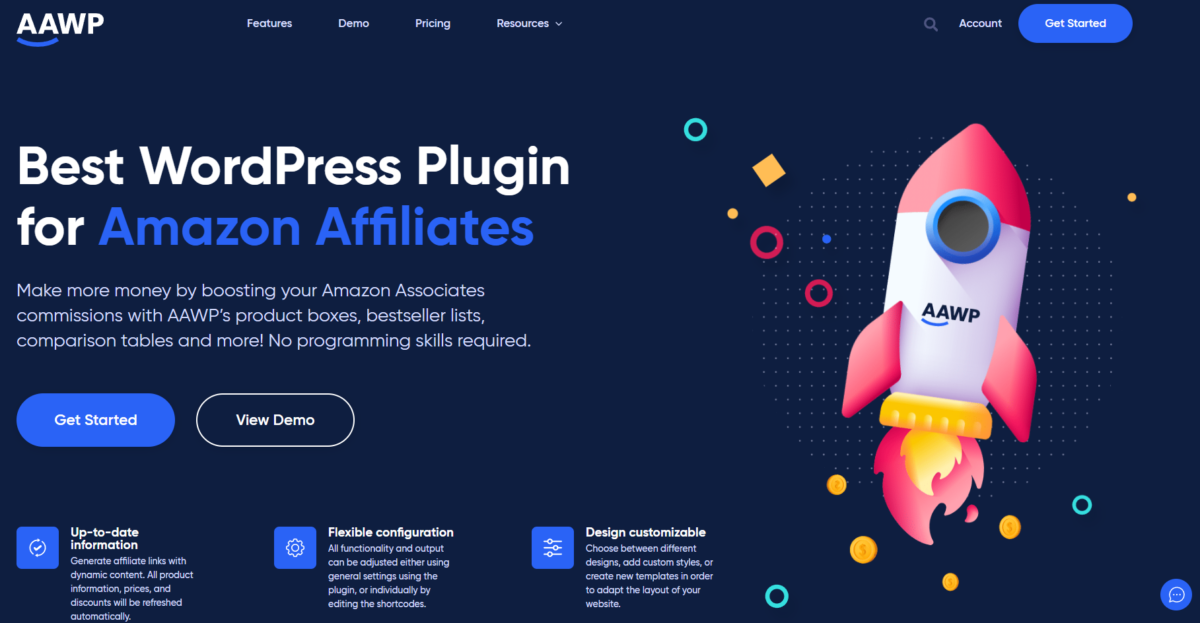Can You Put Amazon Affiliate Links in Emails? The Complete Guide

Want the short answer? No, you cannot put Amazon affiliate links in emails. Full stop.
But don’t close this tab yet!
There’s much more to the story, and plenty of ways you can still make money with your email list while – keeping Amazon happy.
If you’ve built an email list and joined Amazon Associates, you’re sitting on two powerful assets.
The trick is connecting them without breaking Amazon’s rules and risking your account.
Let’s explore what you need to know about Amazon affiliate links in emails, why Amazon has these rules, and, most importantly, how to work within them to keep making money.

The Amazon Affiliate Email Dilemma
Picture this: You’ve spent months building an engaged email list of 5,000 subscribers. You’ve – also joined Amazon Associates and started earning commissions from your website.
Now you’re thinking: “Why not send product recommendations directly to my email subscribers?”
It seems like a no-brainer. Your subscribers trust you. They open your emails. They want your recommendations.
But here’s where Amazon throws a wrench in your plans.
You check the Amazon Associates Operating Agreement and find this:
“You will not engage in any promotional, marketing, or other advertising activities in any offline manner, including by using any of our or our affiliates’ trademarks or logos (including any Amazon Mark), any Content, or any Special Link in connection with email..”.
Wait, what? You can’t use affiliate links in emails at all?
That’s correct. And Amazon doesn’t just gently discourage this practice – they actively enforce it with account suspensions and terminations.
I’ve seen many affiliates lose thousands in commissions because they didn’t understand or follow this rule. Let’s make sure you’re not one of them.
Understanding Amazon’s Rules on Email Marketing
Amazon’s Terms of Service clearly state:
“Special Links may not be placed in any email publication, in any offline promotion..”.
That’s pretty clear, right?
But Amazon’s Associates Program has over 10,000 words of terms and conditions. No wonder people get confused about what’s allowed!
Let’s break down exactly what Amazon means and why they care so much about where you put your links.
What Are Amazon Special Links?
First, what exactly is a “Special Link” that Amazon’s talking about?
A Special Link is any link containing your unique Amazon Associate ID (your affiliate tag). It looks something like this:
https://www.amazon.com/dp/B0773ZY26F?tag=youraffiliateid-20See that ?tag=youraffiliateid-20 part? That’s what makes it “special” – it’s how Amazon tracks that you sent the visitor and that you should therefore get the commission.
Regular Amazon links like https://www.amazon.com/dp/B0773ZY26F are perfectly fine to include in emails. But they won’t earn you a penny when someone clicks and buys.
Why Amazon Bans Affiliate Links in Emails
You might be thinking, “But why? Emails are digital too!”
Here’s the real reason: Amazon can’t properly track offline content.
Emails can be:
- Downloaded and viewed offline
- Forwarded to others
- Saved for later viewing
- Printed out
Amazon wants total visibility into where its affiliate links appear. With emails, they lose that control – and Amazon likes control.
Does it seem silly when most emails are viewed online anyway? Maybe. But those are the rules, and breaking them can cost you your entire affiliate account.
And trust me, Amazon doesn’t mess around with enforcement.
Amazon’s Perspective
To understand Amazon’s position better, let’s look at it from their side:
- Brand control: Amazon carefully controls how its brand appears across the web. Email content can be modified or displayed in unpredictable ways.
- Compliance monitoring: Amazon regularly reviews sites where affiliates place links. This becomes impossible with private emails.
- Spam concerns: Amazon doesn’t want its brand associated with email spam or unsolicited messages.
- Customer experience: They want customers to have a consistent, predictable experience with Amazon links.
- Tracking accuracy: Amazon’s tracking system works differently for web pages versus email clients.
Is it frustrating for us as marketers? Absolutely.
But Amazon’s primary concern is protecting its brand and customer experience, not maximizing its affiliate commissions.

The Cost of Non-Compliance
What exactly happens if you break this rule? Based on numerous cases I’ve observed:
- First offense: Usually a warning email from Amazon asking you to remove the links
- Repeat offenses: Account suspension, often without warning
- Serious violations: Permanent account termination and forfeiture of unpaid commissions
That last one hurts the most. Imagine losing $2,000 in commissions you’ve already earned because of a preventable mistake.
One affiliate I know had his account terminated just two days before his commission payment was due to process. He lost over $4,500 in earned but unpaid commissions – all because his virtual assistant started sending promotional emails with affiliate links.
Common Mistakes That Get Affiliates Banned
Let me share a few horror stories I’ve seen from affiliates who lost their accounts:
1. Automatic Blog Post Emails
Many WordPress sites automatically email new posts to subscribers. If your blog post contains Amazon affiliate links, those go right into the email.
Boom – terms violation.
I once spoke with a blogger who had this happen. She received this email from Amazon:
“We have determined that you are sending Special Links in emails. This is a violation of the Operating Agreement. Your account has been closed”.
Her mistake? She never checked what her automatic email service was sending out.
2. Email Newsletters With Product Roundups
Creating a “Top 10 Products” email with direct affiliate links is another fast track to Banned-ville.
3. PDF Downloads via Email
Sending a downloadable buying guide PDF with affiliate links embedded? That’s also against the rules.
4. “Click to Tweet” With Affiliate Links
Setting up social sharing with pre-populated Amazon affiliate links can land in email when people forward them. Another no-no.
5. Automatically Generated Newsletter Content
This is particularly sneaky. If you use a plugin or service that automatically generates newsletter content based on your recent blog posts, check what it’s pulling.
Many of these tools grab excerpts that include your affiliate links. You publish a blog post with Amazon links, your newsletter tool creates an email with those same links, and suddenly you’re breaking the rules without even knowing it.
My advice:
- Manually create your newsletter content
- Always send test emails to yourself first
- Review any automated email services carefully
- Use the “View Source” feature in your email to check for hidden links

6. Using Link Cloaking Without Understanding It
Some affiliates try to “cloak” their Amazon links using redirects or shorteners, thinking this will bypass Amazon’s rules.
Bad idea.
Amazon’s tracking is sophisticated enough to detect this, and they explicitly prohibit “obscuring the destination of Special Links”. You’ll just add “deceptive practices” to your violations list.
Here’s a tricky one: You send a compliant email, but then a subscriber forwards it to a friend with a note: “Check out this product: [Amazon affiliate link]”.
While you didn’t send the affiliate link in the original email, you could still be held responsible if Amazon traces it back to your account. Always remind subscribers not to share your affiliate links directly.
Safe & Effective Ways to Use Email With Amazon Associates
Enough doom and gloom! Here’s how to make these two powerful tools work together legally:
Strategy 1: The Two-Step Link Method
This is my favorite approach:
- Create great content on your website with your Amazon affiliate links
- Email your list with a link to YOUR content, not directly to Amazon
- Readers click through to your site, then to Amazon
Your email might say: “I just reviewed the 5 best juicers for small kitchens. Check out my top pick here!” The “here” links to your blog post, which contains the Amazon affiliate links.
This method actually works better than direct linking because:
- You get more page views on your site
- Readers see your full review, not just a quick link
- You can include multiple affiliate links in one article
- You build long-term traffic to your content

Strategy 2: Create a “Deals” Page
Set up a dedicated page on your site that you frequently update with the best Amazon deals. Email your list whenever you update it with a simple link to your page.
I know a home decor blogger who sends a weekly “Friday Finds” email. It always links to her updated deals page, which has all her affiliate links. Her readers love it, and she stays completely compliant.
Share valuable insights in your email, but hold back the product recommendations for your site. For example:
“In my latest research on ergonomic office chairs, I discovered 3 surprising factors that most buyers overlook. I’ve outlined them all – plus my recommended chairs for every budget – in my new guide”.
Link to your guide, which has the affiliate links.
Strategy 4: The Roundup Email
Instead of sending one email about one product, create a roundup email that links to multiple pieces of content on your site.
For example: “This week on the blog: My honest review of the new Kindle Paperwhite, 5 underrated kitchen gadgets that changed my cooking game, and the camping gear that survived our rainy weekend trip”.
Each item links to a separate page on your site that contains the relevant Amazon affiliate links.
Strategy 5: Create “Implied” Links
This technique walks the line while staying compliant.
In your email, include product images, descriptions, and even the Amazon logo if you want. Make everything look clickable. Just make sure all links go to your site first, not directly to Amazon.
The key is making the email experience so seamless that users don’t mind the extra click. Use compelling copy like:
“Click to see current pricing and check availability”
This also gives you more control over the buying process and lets you add value beyond what an Amazon product page provides.
Strategy 6: Educational Content First, Products Second
Build emails around solving problems, not pushing products.
For example, instead of “Check out this great blender”, try “How to make silky-smooth soups without the grainy texture”. In the email, provide genuine advice, then link to an article that continues the education and recommends products that help solve the problem.
This approach builds trust and positions your affiliate recommendations as solutions, not just product pitches.
Strategy 7: Use Email Sequences
Create a series of emails that build value before promoting products.
- Email 1: Identify a problem
- Email 2: Share some initial tips to solve it
- Email 3: Go deeper into the solution
- Email 4: Link to your comprehensive guide with product recommendations
This nurturing sequence keeps readers engaged while building toward your Amazon affiliate content.

Step-by-Step Guide: Creating Compliant Email Campaigns
Here’s a simple process to follow:
- Plan your content first: Write your blog post or create your product page with all affiliate links properly disclosed.
- Craft an engaging email: Write an email that teases the content without including affiliate links.
- Link to your site only: Make sure all links go to your website, never directly to Amazon with your affiliate tag.
- Test before sending: Double-check by sending a test email to yourself and verifying no Amazon affiliate links are included.
- Track your results: Use UTM parameters (like ?utm_source=email&utm_campaign=weekly) on your website links to track which emails drive the most Amazon conversions.
Let’s look at an actual email example:
Subject: The blender that changed my smoothie game
Hey [Name],
Remember last week when I complained about my chunky smoothies?
Well, I finally solved it. After testing 7 different blenders (and cleaning up a LOT of splatter), I found the one that actually delivers on the “completely smooth” promise.
I wrote up my whole testing process, including which models failed miserably (one shot mango pulp clear across my kitchen) and which one finally worked.
Check out my blender showdown here: [LINK TO YOUR WEBSITE]
Your smoothie savior,
[Your Name]
Notice: No Amazon links, but still compelling enough to drive clicks through to your content.
Checking for Hidden Affiliate Links
Before sending any email, take these steps to ensure no affiliate links are hiding:
- Send a test email to yourself: Don’t just preview it in your email marketing platform.
- View the source code: In most email clients, you can right-click and select “View Source” or “View Message Source”.
- Search for telltale signs: Look for your affiliate ID or “amazon” in the code.
- Click every link: Make sure each link goes where you expect and doesn’t redirect to Amazon.
- Check images: Ensure images don’t have embedded affiliate links.
I once caught an affiliate link hiding in an email signature that my virtual assistant had added. A quick check saved me from a potential violation.
Creating Landing Pages That Convert Email Traffic
The key to successful Amazon affiliate email marketing is having great landing pages. Here’s how to build them:
- Match email promises: If your email mentions “5 budget-friendly coffee makers”, your landing page should deliver exactly that.
- Minimize distractions: Keep navigation simple and focus on the products mentioned in your email.
- Use clear call-to-actions: Make your Amazon affiliate links stand out with buttons or highlighted text.
- Add exclusive content: Give email subscribers something extra they wouldn’t get from just browsing your site.
- Speed matters: Optimize your landing page for fast loading – people clicking from emails have even less patience than regular visitors.
One travel blogger I know created specific landing pages just for email campaigns that convert 47% better than her regular blog posts.
Email Subject Lines That Drive Clicks
Your email can only drive affiliate sales if it gets opened first. Try these proven formulas:
- Question format: “Is [product] really worth the hype?”
- Numbered lists: “3 kitchen gadgets I can’t live without”
- Personal experience: “How I finally solved my [problem]”
- Urgency: “This deal ends tonight (I had to tell you)”
- Curiosity gap: “The unusual tool professional chefs actually use”
Always deliver on your subject line’s promise. Clickbait might get opened, but it destroys trust and future engagement.
Tools to Help You Stay Compliant
These tools can make your Amazon affiliate email marketing easier and safer:
- AAWP Plugin – Creates beautiful Amazon product showcases on your WordPress site (that you can link to from email)
- Pretty Links – Helps manage and track links on your website
- Lasso – Displays and manages affiliate links across your site
- Email testing tools like Litmus – To check your emails before sending
- Google Analytics – To track which emails drive the most profitable traffic
- ClickWhale – A URL shortener that helps with link management and tracking
- Thirsty Affiliates – Cloaks, manages, and tracks your affiliate links
Spotlight on AAWP for Email Marketers
If you’re serious about Amazon affiliate marketing, AAWP deserves your attention. Here’s why it’s particularly valuable for email marketers:
- Creates conversion-optimized product displays: When you link from email to your site, AAWP’s product boxes create a professional shopping experience.
- Automatically updates prices: Nobody likes clicking through to see outdated information. AAWP keeps prices current.
- Builds comparison tables: Perfect for “best of” roundups that you can promote via email.
- Generates “Deal of the Day” widgets: Create a dedicated deals page that you can link to regularly from emails.
- Maintains Amazon compliance: AAWP follows Amazon’s rules, so you can focus on creating great emails.
Many successful affiliates report that using AAWP in combination with strategic emails has doubled or even tripled their conversion rates compared to basic text links.

Email Marketing Platforms That Play Nice With Amazon Affiliates
Not all email marketing platforms are created equal when it comes to Amazon affiliate marketing. Here are some that work particularly well:
- ConvertKit – Easy to set up automated sequences that drive traffic to your affiliate content
- MailerLite – Affordable with good automation and landing page features
- ActiveCampaign – Advanced segmentation to target the right subscribers
- GetResponse – Good A/B testing to optimize your email performance
When choosing a platform, look for:
- Reliable deliverability (emails that actually reach inboxes)
- Good analytics (to see which emails drive traffic)
- Automation capabilities (to build sequences)
- Easy testing features (to verify compliance)
I’ve tested most of these platforms, and while they all have their strengths, the best choice depends on your specific needs and budget.
Other Important Amazon Associates Rules to Remember
While we’re talking about keeping your account safe, here are a few other easy-to-miss Amazon rules:
- You cannot encourage people to bookmark your affiliate links
- You cannot offer rewards or incentives for using your links
- You cannot display Amazon customer reviews unless you use their API
- You cannot use link shorteners that hide the fact you’re linking to Amazon
Breaking any of these rules can also get your account shut down. And once Amazon bans you, it’s nearly impossible to get back in.
Final Thoughts: Email + Amazon Done Right
You now have the knowledge to safely combine email marketing with Amazon affiliate links – without risking your account.
Remember these key points:
- Never put Amazon affiliate links directly in emails
- Always link to your own content first
- Make your website content so good that the extra click is worth it
- Test your emails before sending to make sure no affiliate links sneak in
- Consider other affiliate programs if email is your main marketing channel
The most successful Amazon affiliates view the email→website→Amazon path as a feature, not a bug. It gives you more control, more page views, and often, higher conversion rates.
Ready to put this knowledge to work? Start by reviewing your most recent emails to make sure they’re compliant, then plan your next campaign using the strategies above.
For even more powerful Amazon affiliate marketing, consider using the AAWP plugin to create beautiful, conversion-optimized product displays on your website – giving your email subscribers an even better experience when they click through.
🚀 Give your Amazon affiliate business the boost it deserves – get started with AAWP today.
FAQs About Amazon Affiliate Links in Emails
Q: Can I put Amazon affiliate links directly in emails?
No, Amazon explicitly prohibits placing Special Links (affiliate links containing your Associate ID tag) in any emails or offline content.
Q: Why doesn’t Amazon allow affiliate links in emails?
Amazon prohibits affiliate links in emails primarily because emails can be accessed offline, and Amazon has limited ability to track and monitor link usage in email environments.
Q: What happens if I accidentally include Amazon affiliate links in my emails?
If you include affiliate links in emails, Amazon may issue a warning for first-time violations, temporarily suspend your account, or permanently terminate your Associates account for repeated violations. This can result in the forfeiture of any unpaid commissions.
Q: Can I use Amazon product images in my affiliate marketing emails?
You can use Amazon product images in emails as long as they don’t contain embedded affiliate links and you comply with Amazon’s image usage policies. However, any links must direct to your website first, not directly to Amazon using your affiliate link.
Q: Is it acceptable to use URL shorteners for Amazon affiliate links in emails?
No, using URL shorteners doesn’t circumvent Amazon’s policy against affiliate links in emails. Even shortened URLs containing your affiliate tag are prohibited in email communications.
Q: How can I track conversions from my emails to Amazon products without using affiliate links?
Use a two-step tracking process: 1) Use unique UTM parameters on links from your email to your website, 2) Track these parameters in your analytics platform to see which email campaigns drive traffic to your pages containing Amazon affiliate links.
Q: Are there any exceptions to Amazon’s policy on affiliate links in emails?
No, Amazon does not make exceptions to this policy. The prohibition applies to all types of email communications including newsletters, automated emails, and transactional emails.
Q: Can I send people directly to Amazon product pages from my emails without using an affiliate link?
Yes, you can include regular (non-affiliate) Amazon product links in emails. However, you won’t earn any commission from these direct links.
Q: Do Amazon’s restrictions on emails apply to social media messaging and chat apps too?
Amazon’s policy specifically mentions emails, but the same principle applies to any messaging platform that could be considered “offline”. To be safe, avoid placing affiliate links in direct messages on any platform.
Q: What’s the difference between Amazon Associates and Amazon Influencer Program regarding email marketing?
Both programs prohibit affiliate links in emails. The Amazon Influencer Program offers additional features like your own Amazon storefront, but the restrictions on email marketing apply equally to both programs.
Q: How can I effectively use email to promote Amazon products without breaking the rules?
Create engaging emails that drive subscribers to your website content (reviews, comparisons, tutorials) containing your affiliate links.
Q: Can I mention that I’m an Amazon Associate in my emails?
Yes, you can disclose your affiliate relationship with Amazon in emails. In fact, proper disclosure is required by FTC regulations.
Q: Is it against Amazon’s terms to create a downloadable PDF with affiliate links from an email?
Yes, this would violate Amazon’s terms. Amazon prohibits affiliate links in “any offline manner” including PDFs, ebooks, or other downloadable documents.
Q: How do other affiliate programs compare to Amazon regarding email restrictions?
Many other affiliate programs (like Walmart, Target, and eBay) allow direct affiliate links in emails, which is a significant difference from Amazon’s policy.
Q: Does using AAWP plugin help with Amazon’s email restrictions?
AAWP creates compliant affiliate links for your website content but doesn’t change Amazon’s email restrictions. However, AAWP helps you create compelling website content that you can link to from your emails.
Q: How can I optimize my emails to drive traffic to my Amazon affiliate content?
Focus on creating compelling subject lines, providing valuable content previews, using strong calls-to-action, and highlighting the benefits readers will gain by clicking through to your website.
Start now with AAWP!
AAWP is the #1 WordPress plugin for Amazon affiliates who are serious about earning more. Get started today!